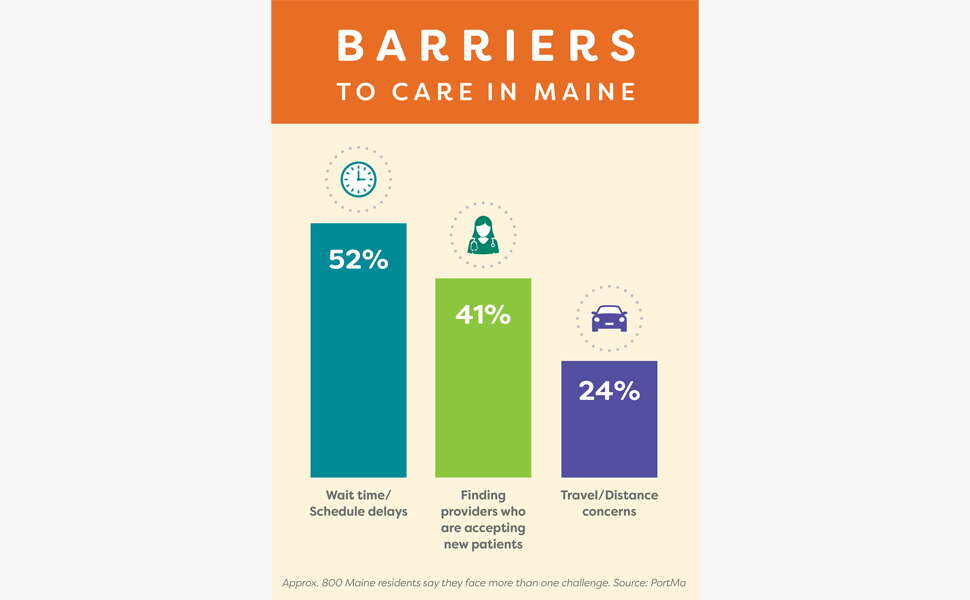
Processing Your Payment
Please do not leave this page until complete. This can take a few moments.
- News
-
Editions
-
- Lists
-
Viewpoints
-
Our Events
-
Event Info
- Women's Leadership Forum 2025
- On the Road with Mainebiz in Bethel
- Health Care Forum 2025
- On The Road with Mainebiz in Greenville
- On The Road with Mainebiz in Waterville
- Small Business Forum 2025
- Outstanding Women in Business Reception 2025
- On The Road with Mainebiz in Bath
- 60 Ideas in 60 Minutes Portland 2025
- 40 Under 40 Awards Reception 2025
- On The Road with Mainebiz in Lewiston / Auburn
- 60 Ideas in 60 Minutes Bangor 2025
Award Honorees
- 2025 Business Leaders of the Year
- 2024 Women to Watch Honorees
- 2024 Business Leaders of the Year
- 2023 NextUp: 40 Under 40 Honorees
- 2023 Women to Watch Honorees
- 2023 Business Leaders of the Year
- 2022 NextUp: 40 Under 40 Honorees
- 2022 Women to Watch Honorees
- 2022 Business Leaders of the Year
-
-
Calendar
-
Biz Marketplace
- News
-
Editions
View Digital Editions
Biweekly Issues
- April 21, 2025 Edition
- April 7, 2025
- March 24, 2025
- March 10, 2025
- Feb. 24, 2025
- Feb. 10, 2025
- + More
Special Editions
- Lists
- Viewpoints
-
Our Events
Event Info
- View all Events
- Women's Leadership Forum 2025
- On the Road with Mainebiz in Bethel
- Health Care Forum 2025
- On The Road with Mainebiz in Greenville
- On The Road with Mainebiz in Waterville
- + More
Award Honorees
- 2025 Business Leaders of the Year
- 2024 Women to Watch Honorees
- 2024 Business Leaders of the Year
- 2023 NextUp: 40 Under 40 Honorees
- 2023 Women to Watch Honorees
- 2023 Business Leaders of the Year
- + More
- 2022 NextUp: 40 Under 40 Honorees
- 2022 Women to Watch Honorees
- 2022 Business Leaders of the Year
- Nomination Forms
- Calendar
- Biz Marketplace
Sponsored by: Community Health OptionsJune 24, 2024Virtual Care Can Ease Maine’s Health Access Challenges

When it comes to healthcare, Maine gets high marks for its quality of care. The trouble is, it’s getting harder for Mainers to access that care.
Recently, a Community Health Options Member needed a new primary care provider after her doctor retired. After a long search, she finally found someone accepting new patients, but faced an eight-month wait for an appointment. Unfortunately, her story has become commonplace. Access to care is no longer a struggle for just the uninsured but has become a universal issue that hits everyone.
Earlier this year, Mainers cited multiple challenges to getting care in a Community Health Options survey with Portland Marketing Analytics. More than half (52%) said they faced long wait times, while 41% couldn’t find providers who were accepting new patients, and 24% found care, but had to travel far to get it.
Respondents from Northern Maine identified wait times as their biggest challenge, with almost two-thirds citing it as a significant concern compared to about half in Southern Maine. Younger consumers were more concerned about wait times, while older consumers had greater difficulty finding a provider.
Paths toward access
Maine definitely feels the effects of a national shortage of healthcare workers, with fewer doctors practicing family medicine while doing their best to treat a growing population. Telehealth, spurred on by the pandemic, has addressed some challenges, making it easier for patients and providers to meet. Post-pandemic, telehealth usage continues to play a key role, with 17% of visits being virtual, up from 0.1% in 2019, according to a McKinsey report.
Now, virtual primary care is gaining popularity, offering timely access to care and relieving some stress on traditional providers who simply can’t take on new patients. Community Health Options has long covered traditional and behavioral telehealth benefits and this year began partnering with Firefly Health, which offers virtual-first care to all Members 18 and over. People using Firefly get a dedicated team that works with Maine-based labs, providers and facilities to deliver in-person care when necessary.
Remember the Member who waited for eight months? When she signed up for Firefly, she got an appointment the same day and told us, “I wouldn’t have access to care without it.”
Virtual benefits support employers looking to provide employees with health plans they can actually use to stay healthy or to manage complex conditions. And when it comes to the benefits employees expect, more than 70% of respondents—especially Generation X and millennials—cited access to virtual primary care as important to them. Unsurprisingly, almost 40% in northern Maine said the benefit was very important, but even in southern Maine, 35% want access to virtual care.
Studies show patients miss fewer virtual appointments, helping them to stay on track with their health needs. For instance, Walmart employees with diabetes who used virtual care saw a 24% average reduction in glucose levels and patients with hypertension had a 14% drop in blood pressure, the company said in 2023 when it expanded its virtual care program to Maine, among other states.
Virtual care won’t solve all our access issues, but it has emerged as a promising option. Coupled with wellness tools to help people stay healthy and meet health goals, with in-person care when needed, virtual care certainly offers a way to facilitate care that leads to improved health outcomes, while providing the potential to lower overall healthcare costs by enabling Mainers to get access to timely preventive care.
Image
Heather Bouffard, a vice president at Community Health Options, oversees a product development, marketing and communications team dedicated to building health plans with the benefits and wellness tools Mainers need—and ensuring they know how to use them.

The Giving Guide
The Giving Guide helps nonprofits have the opportunity to showcase and differentiate their organizations so that businesses better understand how they can contribute to a nonprofit’s mission and work.
Learn More
Work for ME
Work for ME is a workforce development tool to help Maine’s employers target Maine’s emerging workforce. Work for ME highlights each industry, its impact on Maine’s economy, the jobs available to entry-level workers, the training and education needed to get a career started.
Learn More
Groundbreaking Maine
Whether you’re a developer, financer, architect, or industry enthusiast, Groundbreaking Maine is crafted to be your go-to source for valuable insights in Maine’s real estate and construction community.
Coming June 2025
Learn more-
The Giving Guide
The Giving Guide helps nonprofits have the opportunity to showcase and differentiate their organizations so that businesses better understand how they can contribute to a nonprofit’s mission and work.
-
Work for ME
Work for ME is a workforce development tool to help Maine’s employers target Maine’s emerging workforce. Work for ME highlights each industry, its impact on Maine’s economy, the jobs available to entry-level workers, the training and education needed to get a career started.
-
Groundbreaking Maine
Whether you’re a developer, financer, architect, or industry enthusiast, Groundbreaking Maine is crafted to be your go-to source for valuable insights in Maine’s real estate and construction community.
Coming June 2025
ABOUT
NEW ENGLAND BUSINESS MEDIA SITES
No articles left
Get access now
In order to use this feature, we need some information from you. You can also login or register for a free account.
By clicking submit you are agreeing to our cookie usage and Privacy Policy
Already have an account? Login
Already have an account? Login
Want to create an account? Register
Get access now
In order to use this feature, we need some information from you. You can also login or register for a free account.
By clicking submit you are agreeing to our cookie usage and Privacy Policy
Already have an account? Login
Already have an account? Login
Want to create an account? Register
This website uses cookies to ensure you get the best experience on our website. Our privacy policy
To ensure the best experience on our website, articles cannot be read without allowing cookies. Please allow cookies to continue reading. Our privacy policy